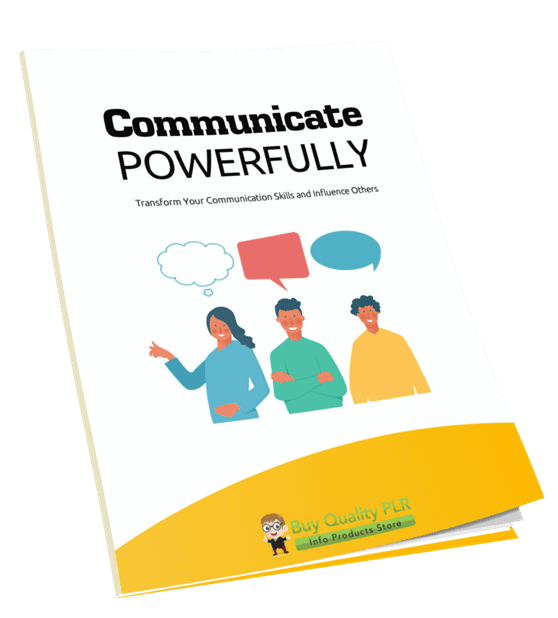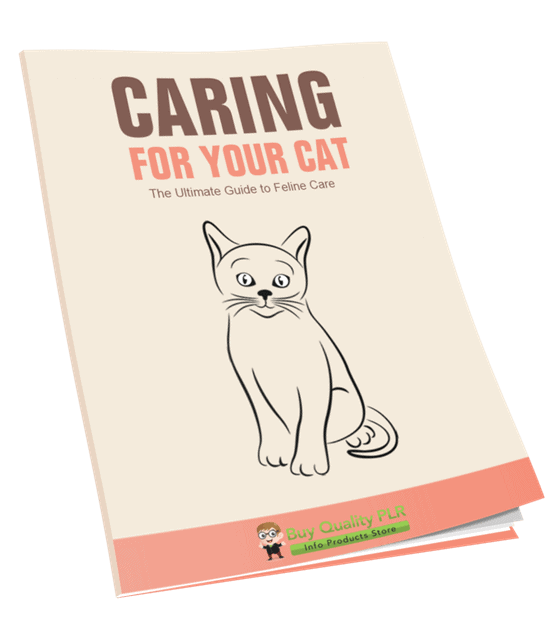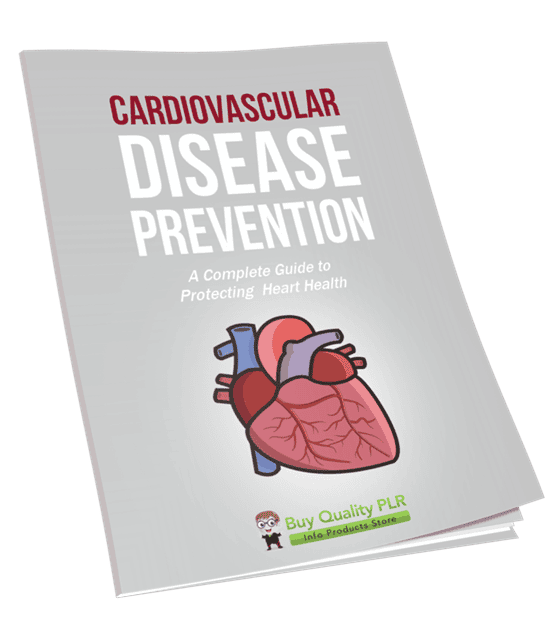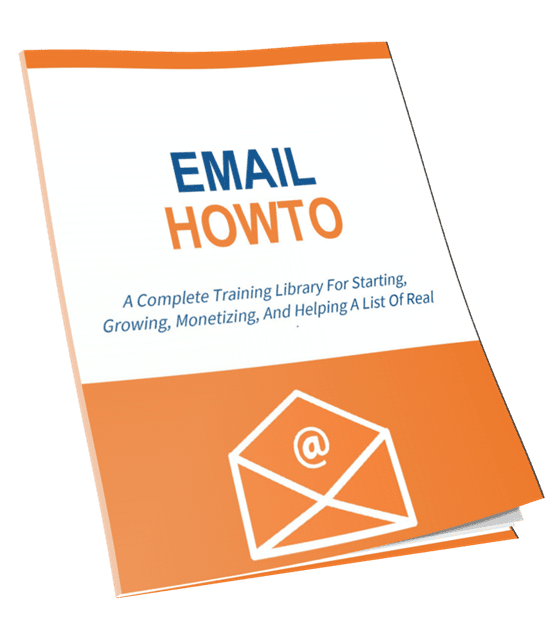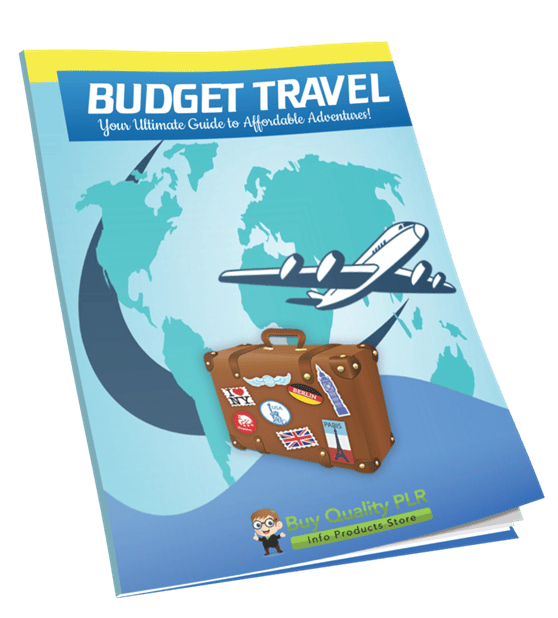
Budget Travel PLR Course 20k Words
in PLR Checklists , PLR eBooks , PLR eCourses , PLR List Building Reports , Premium PLR , Premium PLR eBooks , Premium PLR Reports , Premium White Label Brandable PLR Coaching Courses , Private Label Rights Products , Travel PLR , Travel PLR eBooksChoose Your Desired Option(s)
has been added to your cart!
have been added to your cart!
#budgettravel #travelonabudget #cheaptravel #frugaltravel #backpackingtips #affordabletrips #travelmorespendless #wanderlust #smarttravel
Budget Travel: Explore More for Less – Your Ultimate Guide to Affordable Adventures!
Are you dreaming of exploring the world without breaking the bank? Budget Travel PLR Course is the ultimate guide that will teach you how to travel affordably while maximizing your experiences! Whether you’re a backpacker on a shoestring budget or someone looking for ways to save while traveling in comfort, this done-for-you PLR course is designed to help you make the most of every dollar you spend.
For just $14.99, you’ll get a 19,121-word PLR course packed with insider travel tips, smart strategies, and simple steps to help you travel more while spending less. This course will guide your audience (or help you!) plan cost-effective trips, save money on transportation and accommodation, and enjoy the best food and activities—all while staying on budget.
Presenting…
Budget Travel PLR Course 20k Words
What’s Included in the Budget Travel PLR Course?
This step-by-step course is divided into 5 modules, each containing key strategies to help you plan and execute your budget-friendly travel adventure.
Module 1: Smart Travel Planning – The Foundation of Budget Travel
- Set a Travel Budget: Learn how to break down your travel expenses into categories and determine how much you can realistically spend.
- Choose Budget-Friendly Destinations: Find affordable travel destinations and learn how to get the most value for your money.
- Plan Your Trip in Advance (But Stay Flexible!): Understand how booking early and staying flexible can help you score last-minute deals.
- Pack Smart & Avoid Extra Costs: Learn to pack light and avoid extra baggage fees by planning ahead.
Module 2: Budget-Friendly Transportation – Getting There for Less
- Find the Cheapest Flights: Discover the best ways to search for the lowest airfare, including using comparison websites and setting price alerts.
- Explore Alternative Transportation: Buses, trains, and budget airlines can save you money—learn how to use them effectively.
- Travel Like a Local: Use public transportation for an authentic and cost-effective way to get around.
- Walk or Rent a Bike: Enjoy the benefits of walking or biking, both healthy and budget-friendly options for sightseeing.
Module 3: Budget-Friendly Accommodation – Where to Stay Without Overspending
- Compare Budget Accommodation Options: Learn how to find affordable accommodations, from hostels to guesthouses to Airbnb.
- Consider Alternative Stays: Explore house-sitting, Couchsurfing, and work-exchange programs like WWOOF to save money on lodging.
- Book Smartly to Save Money: Use reward points, cashback websites, and last-minute deals to find great accommodations at lower prices.
- Stay with Friends or Network with Locals: Discover how networking can lead to free or discounted stays.
Module 4: Saving on Food and Activities – Eat and Explore on a Budget
- Eat Like a Local: Skip expensive tourist restaurants and enjoy street food and local markets for an authentic, budget-friendly experience.
- Cook Your Own Meals: Save money by cooking in accommodations that have kitchens, and pack snacks for your excursions.
- Find Free & Low-Cost Activities: Discover free walking tours, free-entry museums, and stunning nature spots that don’t cost a thing.
- Use City Passes & Discount Cards: Many cities offer passes for discounts on attractions, transport, and more—find out how they can benefit you.
Module 5: Travel Hacks & Money-Saving Strategies – Maximize Your Budget
- Use Travel Rewards & Cashback Programs: Learn how to use credit cards with travel rewards and cashback programs to save on flights and hotels.
- Travel Insurance is a Must: Discover why skipping travel insurance might cost you more in the long run and how to find affordable coverage.
- Avoid Tourist Traps & Hidden Fees: Be aware of common scams, avoid overpriced tourist zones, and watch for hidden fees in currency exchange and ATM withdrawals.
- Be Flexible & Open to Unexpected Opportunities: Embrace spontaneity and flexibility to grab last-minute deals and discover hidden gems.
Bonus Features
Budget Travel Checklist – 364 Words
An easy-to-follow checklist that summarizes the steps from the course, helping you stay organized while planning your budget trip.
Budget Travel FAQs – 883 Words
A helpful FAQ page that answers common questions about budget travel, from finding the cheapest flights to how to handle emergencies on a tight budget.
Sales Page – 556 Words
A professionally written sales page that is ready to use, allowing you to quickly market and sell the Budget Travel PLR Course to your audience.
How to Use and Profit from This Budget Travel PLR Course
This Budget Travel PLR Course is packed with high-quality content that you can use in various ways to build your business or create valuable products. Here are some ideas:
1. Sell the Course As-Is
You can sell the entire Budget Travel PLR Course as-is! It’s already a complete, ready-to-sell product packed with value.
2. Break it Into Smaller Reports
Split the course into smaller, easily digestible reports and sell each one individually for $10-$20 each. Focus on specific areas like budget accommodation, flight booking tips, or free activities for different types of travelers.
3. Bundle With Other Travel PLR Content
Combine this course with other related PLR content (e.g., packing lists, travel guides, or packing hacks) to create a comprehensive travel bundle that you can sell for $47-$97.
4. Create a Membership Site
Set up a membership site where you offer exclusive access to this course and other travel-related tips and updates, generating monthly residual payments.
5. Convert the Content into a Multi-Week E-Class
Turn this course into a multi-week e-class and charge $297-$497 for full access. Add quizzes, assignments, and personalized support to enhance the experience.
6. Create Physical Products
Take the Budget Travel PLR Course and turn it into physical products like printed guides or workbooks that you can sell for premium prices.
7. Use as a Lead Magnet
Offer parts of the course as free lead magnets to grow your email list, and then upsell the full course or other related products.
What You Can Do with This Course
Permissions:
- Sell the content as-is or make minor tweaks to make it your own.
- Break it into smaller reports and sell them for $10-$20 each.
- Bundle the content with other related PLR content to create a higher-ticket product for $47-$97.
- Set up a membership site with the content and generate monthly residual payments.
- Convert the content into a multi-week e-class for $297-$497.
- Create physical products (e.g., workbooks or printed guides) and sell them for premium prices.
- Use the content for lead magnets or to build your email list.
Restrictions:
- You cannot pass on PLR rights to your customers.
- No 100% affiliate commissions—the maximum commission you can offer is 75%.
- The complete materials cannot be given away for free—they must be sold or excerpted.
- Cannot add this content to existing customer orders without an additional purchase.
Get Instant Access to the Budget Travel PLR Course for Just $14.99!
The Budget Travel PLR Course is your go-to resource for learning how to travel affordably while making the most of every experience. With 19,121 words of high-quality content, this course offers incredible value. Whether you want to sell it as-is, break it into smaller reports, or create a membership site, this done-for-you content will help you profit from the growing budget travel market.
Buy Now for Just $14.99 and start helping others travel the world on a budget!
Your Path to Profiting from Budget Travel Starts Here!
With this comprehensive, professionally written course, you can offer valuable content that helps your audience explore the world while saving money. Get started today and provide life-changing tips to travelers looking to stretch their dollars further!
has been added to your cart!
have been added to your cart!
Here A Sample of Budget Travel PLR Course
This course will teach you how to travel affordably while maximizing your experiences. From planning and transportation to accommodation and food, you’ll learn insider tips to make the most of your budget.
Module 1: Smart Travel Planning – The Foundation of Budget Travel
Step 1: Set a Travel Budget
Before you start planning your trip, the most crucial step is to determine how much you can afford to spend. Without a well-structured budget, it’s easy to overspend or run out of funds before your journey ends. Setting a realistic travel budget helps you manage expenses, make informed choices, and enjoy your trip stress-free.
1. Determine Your Total Budget
Start by deciding the maximum amount you are willing to spend on your entire trip.
Consider your financial situation and any upcoming obligations. If you are saving for this trip, determine how much you can allocate from your monthly income.
If you have an existing travel fund, assess how much is available and how long it will last based on your destination’s cost of living.
Decide whether you will be paying upfront for everything or setting aside funds to cover expenses as you go.
2. Research the Cost of Your Destination
Every country and city has different price levels for accommodation, food, and transportation.
Use travel budgeting websites like Numbeo, Budget Your Trip, or Expatistan to compare average costs.
Look at blogs, travel forums, and YouTube channels for real-life budget breakdowns from travelers who have visited your destination recently.
Check exchange rates and understand the local currency. Be aware of conversion fees when withdrawing cash abroad.
If your destination is expensive, consider traveling during the off-season to reduce costs on flights, accommodation, and activities.
3. Break Down Your Budget into Categories
Once you have an estimated total budget, divide it into the following key categories:
A. Flights and Transportation (✈️🚆🚍)
This includes airfare, train tickets, intercity bus fares, car rentals, and public transportation passes.
Compare different airlines, budget carriers, and flight booking platforms for the best deals.
Consider additional costs such as baggage fees, seat selection, and airport transfers.
B. Accommodation (🏨🏡🏕️)
This covers hotel stays, Airbnb rentals, hostels, guesthouses, and alternative accommodations like Couchsurfing or homestays.
If staying long-term, check for discounted rates on monthly rentals.
Factor in security deposits, taxes, and potential service fees.
C. Food and Drinks (🍽️🥤)
Determine how much you will spend on dining out, groceries, snacks, and beverages.
Research the cost of meals at local restaurants versus cooking your own food.
Include extra funds for trying local delicacies or street food.
D. Daily Transportation (🚕🚋🚲)
Budget for taxis, ride-sharing services (Uber, Lyft, or local equivalents), metro tickets, bike rentals, and ferry rides.
Look into city passes or prepaid transport cards for cost savings.
E. Activities and Sightseeing (🎟️🏝️🏰)
Include entrance fees for tourist attractions, guided tours, adventure activities, and cultural experiences.
Research free or low-cost activities like hiking, walking tours, and public events.
F. Travel Insurance and Health (🚑💊)
Do not skip travel insurance, as medical expenses abroad can be costly.
Budget for travel vaccinations, prescription medications, and emergency healthcare funds.
Check if your current insurance covers international travel or if you need additional coverage.
G. Shopping and Souvenirs (🛍️🎁)
Set aside funds for gifts, souvenirs, and personal shopping.
Be mindful of customs regulations and duty-free limits when bringing items back home.
H. Emergency Fund (⚠️💳)
Always allocate a portion of your budget for unexpected situations such as lost luggage, missed flights, or last-minute accommodation changes.
Ensure you have access to extra funds through credit cards, digital wallets, or a backup bank account.
4. Track and Adjust Your Budget
Use a travel budgeting app like Trail Wallet, TravelSpend, or Splitwise to monitor expenses in real-time.
Keep receipts and update your budget daily to stay on track.
If you overspend in one category, compensate by cutting costs in another area.
Plan for flexibility but avoid unnecessary splurges that could disrupt your financial plan.
By setting a detailed travel budget, you gain control over your spending and ensure a smooth, enjoyable trip without financial stress.
Step 2: Choose Budget-Friendly Destinations
Not all travel destinations cost the same. Some places are naturally more affordable than others, allowing you to experience more while spending less. Choosing the right destination can make a significant difference in how far your money stretches. By selecting budget-friendly countries or cities, you can enjoy a rich travel experience without financial strain.
1. Understand What Makes a Destination Affordable
A budget-friendly destination typically has a lower cost of living, making daily expenses such as accommodation, food, and transportation more affordable.
Places with favorable exchange rates against your home currency can significantly reduce travel expenses. Check the exchange rate and consider how it affects your purchasing power.
Some countries have lower tourism-related taxes and fees, making hotels, flights, and attractions more cost-effective.
Local transportation, including buses, trains, and taxis, should be inexpensive and well-connected. Research whether public transport is efficient and affordable in the area.
The availability of street food, budget restaurants, and affordable supermarkets can help reduce food expenses while still allowing you to enjoy local cuisine.
Look for destinations with plenty of free or low-cost attractions, such as national parks, beaches, cultural landmarks, and walking tours.
2. Research Budget-Friendly Regions and Countries
To maximize your travel budget, focus on destinations known for affordability without compromising on experience. Here are a few regions that offer great value for money:
A. Southeast Asia
Countries like Thailand, Vietnam, Indonesia, and the Philippines offer budget-friendly accommodations, street food, and affordable local transportation.
Hostels, guesthouses, and budget hotels are widely available at reasonable rates.
Many attractions, such as temples, beaches, and markets, are free or low-cost.
Public transportation, including tuk-tuks, motorbike taxis, and buses, is economical.
B. Eastern Europe (🇭🇺🇵🇱🇷🇴🇧🇬)
Hungary, Poland, Romania, and Bulgaria provide the charm of Europe at a fraction of the price compared to Western Europe.
Accommodation and food are significantly cheaper, especially outside major cities.
Many historical sites, castles, and nature parks are accessible for free or at minimal cost.
Public transportation is well-developed and affordable, with budget airlines offering cheap intercity flights.
C. Latin America (🇲🇽🇨🇴🇧🇷🇵🇪)
Mexico, Colombia, Brazil, and Peru offer vibrant cultures, beautiful landscapes, and affordable travel experiences.
Local buses, collectivos (shared taxis), and metro systems make getting around inexpensive.
Street markets and traditional eateries serve delicious food at low prices.
Outdoor activities like hiking, exploring beaches, and visiting ruins are often budget-friendly.
D. South Asia (🇮🇳🇳🇵🇱🇰)
India, Nepal, and Sri Lanka provide diverse experiences at very low costs.
Trains, buses, and tuk-tuks make transportation extremely budget-friendly.
Food is inexpensive, with street food stalls and local restaurants serving delicious meals at a fraction of Western prices.
Many temples, cultural sites, and natural attractions have free entry or minimal fees.
E. Africa (🇲🇦🇪🇬🇹🇿🇿🇦)
Morocco, Egypt, Tanzania, and South Africa offer diverse travel experiences at reasonable prices.
Affordable guesthouses, hostels, and local lodges provide budget accommodation options.
Markets and street vendors serve traditional dishes at low costs.
National parks and outdoor adventures like hiking and safaris vary in price, but budget options exist.
3. Compare Costs and Plan Accordingly
Once you have a list of potential budget-friendly destinations, compare the costs of flights, accommodation, food, and activities.
Use travel budget websites and apps like Numbeo, Budget Your Trip, or Expatistan to compare daily living expenses in different countries.
Check flight prices using Skyscanner, Google Flights, or Kiwi.com to find the most affordable travel options.
Consider staying in hostels, guesthouses, or budget hotels instead of expensive resorts. Look for accommodations with kitchen access to save on meals.
Research affordable dining options such as street food, local markets, and casual restaurants instead of high-end dining establishments.
Compare local transportation options like buses, trains, and ride-sharing services to find the cheapest and most efficient ways to get around.
Look into city passes or tourism cards that offer discounted or free access to attractions, public transport, and guided tours.
4. Take Advantage of Seasonal Price Differences
Choosing the right time to visit a destination can significantly impact your travel budget.
Traveling during the off-season (low or shoulder season) often means lower prices on flights, hotels, and tours. Tourist attractions are also less crowded.
Peak seasons vary by destination. For example, Southeast Asia is most expensive during winter months when travelers escape the cold, while European cities are priciest during summer.
Research the best times to visit based on weather, festivals, and tourist crowds while keeping budget considerations in mind.
Be flexible with your travel dates to take advantage of airline discounts and last-minute deals. Midweek flights are often cheaper than weekend departures.
By selecting budget-friendly destinations and timing your trip wisely, you can make the most of your travel experience while keeping costs under control.
Step 3: Plan Your Trip in Advance (But Stay Flexible!)
Careful planning can help you save money, avoid unnecessary expenses, and make the most of your trip. However, while booking early can secure great deals, staying flexible with dates, destinations, and even accommodations can unlock even better last-minute discounts.
1. Book Flights and Accommodation in Advance for Better Deals
Flights and accommodations are often the biggest expenses when traveling. Booking them early can help you lock in lower prices and avoid price hikes.
- Use Flight Comparison Tools: Websites like Skyscanner, Google Flights, and Momondo allow you to compare airfare prices across different airlines. Set up price alerts to get notified when fares drop.
- Be Flexible with Dates: Flights on weekdays (especially Tuesdays and Wednesdays) are often cheaper than weekend flights. If you can, adjust your departure and return dates to find the most affordable option.
- Consider Alternative Airports: Sometimes flying into or out of a nearby airport can be significantly cheaper. Check different airports in the region for better flight deals.
- Book Budget-Friendly Accommodation Early: Affordable accommodations, such as hostels, budget hotels, and guesthouses, fill up quickly—especially in high-demand destinations. Platforms like Booking.com, Hostelworld, and Airbnb offer early-bird discounts.
- Check Cancellation Policies: Look for flights and hotels with free cancellation or flexible date changes. This allows you to rebook if you find a better deal later.
2. Stay Flexible to Take Advantage of Last-Minute Deals
While planning ahead helps you secure lower prices, being open to changes can unlock even better opportunities.
- Last-Minute Flight Deals: Airlines often drop prices for unsold seats a few days before departure. Websites like Secret Flying and Scott’s Cheap Flights can help you find surprise deals.
- Accommodation Discounts: Many hotels and Airbnb hosts reduce prices at the last minute to fill empty rooms. Apps like HotelTonight specialize in last-minute hotel discounts.
- Flexible Destination Approach: If you’re open to different destinations, use Skyscanner’s “Everywhere” feature to find the cheapest places to fly to from your location.
- Stay Open to Alternative Accommodation: If hotels are expensive, consider hostels, Couchsurfing, house-sitting opportunities, or staying with friends and family. These can provide budget-friendly (or even free) lodging options.
3. Create a Loose Itinerary to Save Time and Money
Having a structured itinerary can prevent unnecessary expenses, but it’s important to leave room for spontaneity.
- Plan Major Activities in Advance: Some popular attractions, tours, and experiences offer discounts for early bookings. Research what you want to do and check if booking ahead saves money.
- Use Public Transport: Research how to navigate your destination using buses, trains, and metros instead of taxis or rental cars. Many cities offer tourist passes for unlimited rides at a lower cost.
- Look for Free Activities: Many cities have free walking tours, museum discount days, public parks, and cultural festivals. Research these in advance to add budget-friendly options to your itinerary.
- Don’t Overpack Your Schedule: Leaving some flexibility in your itinerary allows you to take advantage of local recommendations, unexpected travel deals, or spontaneous day trips without feeling rushed.
4. Pack Smart and Plan for Unexpected Expenses
Packing the right essentials can help you avoid extra costs during your trip.
- Check Baggage Fees Before Booking: Some budget airlines charge extra for checked luggage, and the fees are often higher if you pay at the airport. Pack light and follow carry-on size restrictions to save money.
- Bring Travel Essentials: Carry reusable water bottles, a power bank, a universal adapter, and basic medications to avoid unnecessary expenses.
- Have an Emergency Fund: Set aside some money for unexpected expenses like medical emergencies, lost items, or last-minute itinerary changes.
- Get Travel Insurance: Even on a budget trip, travel insurance can protect you from unexpected costs due to flight cancellations, medical emergencies, or lost baggage. Compare policies on websites like World Nomads or SafetyWing.
By booking essential parts of your trip early while keeping flexibility for deals and unexpected opportunities, you can make the most of your budget and enjoy stress-free travel.
Step 4: Pack Smart & Avoid Extra Costs
Packing wisely can save you money, prevent unnecessary stress, and make your travel experience smoother. Airlines charge hefty fees for extra baggage, and forgetting essential items can force you to buy overpriced replacements. By planning ahead and packing strategically, you can avoid unexpected expenses and travel comfortably.
1. Pack Light to Avoid Baggage Fees
Many airlines charge extra for checked baggage, and budget airlines often have strict weight and size limits for carry-ons. Packing light ensures you stay within the limits and avoid unnecessary fees.
- Choose the Right Bag: A sturdy, lightweight carry-on backpack or suitcase that meets airline size requirements can help you avoid checked luggage fees. Look up airline policies in advance to ensure your bag fits within the allowed dimensions.
- Use Packing Cubes: Packing cubes help you organize your clothes efficiently, saving space and making it easier to find items without unpacking everything.
- Follow the 3-1-1 Rule for Liquids: If you’re only taking a carry-on, make sure your liquids (such as shampoo, lotion, and sunscreen) fit in travel-size containers (100ml or less) and store them in a clear, resealable bag to meet security regulations.
- Wear Your Bulkiest Items: If you’re traveling to a colder destination, wear your heaviest clothing (such as a jacket and boots) on the plane to free up space in your luggage.
- Pack Versatile Clothing: Choose neutral, multi-purpose clothing that you can mix and match. Bring lightweight, wrinkle-resistant fabrics that dry quickly if you need to wash them during your trip.
2. Bring Essentials to Avoid Overpriced Purchases
Many common travel necessities are expensive at airports or tourist destinations. Packing these items in advance can save you money and hassle.
- Reusable Water Bottle: Many airports and cities have free water refill stations. A reusable water bottle will help you stay hydrated while avoiding the high cost of bottled water. Some bottles even have built-in filters for added convenience.
- Travel-Sized Toiletries: Buying full-size toiletries at your destination can be expensive. Pack travel-sized shampoo, conditioner, toothpaste, and other personal care items to save money.
- Portable Power Bank: A power bank ensures your phone and other devices stay charged throughout the day, preventing the need to buy expensive charging accessories on the go.
- Universal Travel Adapter: If traveling internationally, check the electrical outlet type at your destination and bring a universal adapter to avoid buying one at the airport.
- Basic Medications: Carry essential medicines such as pain relievers, allergy medication, motion sickness pills, and any prescription drugs you need. This saves you from searching for pharmacies in an unfamiliar place or paying high prices for common medications.
3. Prepare for Different Weather Conditions to Avoid Emergency Shopping
Weather can be unpredictable, and being unprepared may force you to buy expensive clothing or gear at your destination. Researching the climate in advance and packing accordingly will help you stay comfortable and avoid unnecessary expenses.
- Check the Weather Forecast: Look up the forecast for your destination before packing. If there’s a chance of rain, bring a compact umbrella or a lightweight rain jacket to avoid buying one last minute.
- Layering is Key: Instead of packing bulky coats or heavy sweaters, bring lightweight layers that can be combined for warmth. This allows you to adjust to different temperatures without overpacking.
- Pack Comfortable Footwear: Walking in the wrong shoes can lead to discomfort and unexpected expenses on new footwear. Choose comfortable, versatile shoes suitable for long walks and different terrains.
- Sun Protection: If traveling to a sunny destination, bring sunglasses, a hat, and sunscreen. These items can be overpriced in tourist areas, so packing them in advance will save you money.
4. Use Smart Packing Strategies to Maximize Space and Convenience
Efficient packing not only saves space but also helps you keep your luggage organized and travel stress-free.
- Roll Your Clothes Instead of Folding: Rolling clothes instead of folding them saves space and prevents wrinkles. This technique allows you to fit more into your bag while keeping items neat.
- Use a Packing Checklist: A checklist ensures you don’t forget essentials and helps prevent last-minute, overpriced purchases. Many travel apps offer customizable packing lists based on your destination.
- Leave Room for Souvenirs: If you plan to buy souvenirs, leave some extra space in your bag or bring a foldable tote to avoid paying for additional baggage.
- Secure Your Valuables: Keep your passport, travel documents, and money in a secure travel pouch or money belt to prevent loss or theft.
By packing light, bringing must-have items, and preparing for different weather conditions, you can avoid extra costs and enjoy a smooth, budget-friendly travel experience.
We’re also giving these extra bonuses
Budget Travel – Checklist

Budget Travel – FAQs

Budget Travel – Salespage Content

Package Details:
Word Count: 19 121 Words
Number of Pages: 84
Budget Travel – Bonus Content
Checklist
Word Count: 364 words
FAQs
Word Count: 883 words
Salespage Content
Word Count: 556 words
Total Word Count: 20 924 Words
Your PLR License Terms
PERMISSIONS: What Can You Do With These Materials?
Sell the content basically as it is (with some minor tweaks to make it “yours”).
If you are going to claim copyright to anything created with this content, then you must substantially change at 75% of the content to distinguish yourself from other licensees.
Break up the content into small portions to sell as individual reports for $10-$20 each.
Bundle the content with other existing content to create larger products for $47-$97 each.
Setup your own membership site with the content and generate monthly residual payments!
Take the content and convert it into a multiple-week “eclass” that you charge $297-$497 to access!
Use the content to create a “physical” product that you sell for premium prices!
Convert it to audios, videos, membership site content and more.
Excerpt and / or edit portions of the content to give away for free as blog posts, reports, etc. to use as lead magnets, incentives and more!
Create your own original product from it, set it up at a site and “flip” the site for megabucks!
RESTRICTIONS: What Can’t You Do With These Materials?
To protect the value of these products, you may not pass on the rights to your customers. This means that your customers may not have PLR rights or reprint / resell rights passed on to them.
You may not pass on any kind of licensing (PLR, reprint / resell, etc.) to ANY offer created from ANY PORTION OF this content that would allow additional people to sell or give away any portion of the content contained in this package.
You may not offer 100% commission to affiliates selling your version / copy of this product. The maximum affiliate commission you may pay out for offers created that include parts of this content is 75%.
You are not permitted to give the complete materials away in their current state for free – they must be sold. They must be excerpted and / or edited to be given away, unless otherwise noted. Example: You ARE permitted to excerpt portions of content for blog posts, lead magnets, etc.
You may not add this content to any part of an existing customer order that would not require them to make an additional purchase. (IE You cannot add it to a package, membership site, etc. that customers have ALREADY paid for.)
Deprecated: Function post_permalink is deprecated since version 4.4.0! Use get_permalink() instead. in /home/buyqualityplr/public_html/wp-includes/functions.php on line 6121
Share Now!

